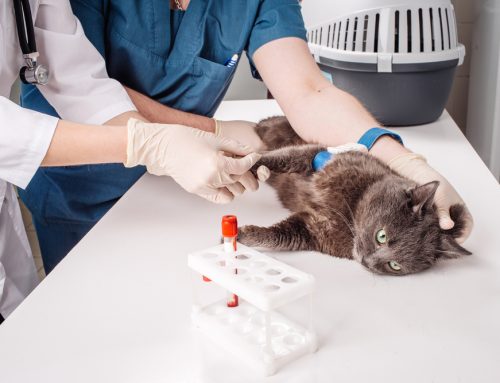Many pet owners assume that arthritis only affects older pets, but this chronic, inflammatory joint condition is common in pets of all ages. Arthritis can be painful for your pet, and, because it is a degenerative disease, early diagnosis and prompt treatment are essential. By learning how to identify early signs of arthritis, you can get your pet the care they need to manage the condition and protect them from pain and suffering. Our team at Central Kentucky Veterinary Center shares the do’s and don’ts for identifying arthritis in pets.
DO educate yourself about arthritis in pets
Because arthritis is such a common condition, it’s important to educate yourself so you can take precautions to minimize your pet’s risk and quickly identify signs of the disease. Arthritis, which also is referred to as degenerative joint disease (DJD), is a progressively worsening joint inflammation caused by cartilage deterioration. In a healthy joint, a smooth cartilage layer acts as a cushion between the bones, and joint fluid reduces friction inside the joint during movement. When the cartilage is damaged, the cushion is lost, and the resulting friction between bones causes pain and decreased mobility. Cartilage deterioration is most commonly seen in the elbows, knees, hips, and lower spine and can be caused by:
- Age
- Injury
- Repetitive stress
- Disease
Arthritis affects many adult and senior pets, and additional factors may increase a pet’s arthritis risk—no matter their age. These factors include:
- Breed — While cat breeds appear to develop arthritis at the same rate, among dogs, the incidence is higher in large- and giant-breed canines. The larger the pet, the more pressure is placed on the joints, leading to faster cartilage deterioration.
- Weight — Overweight and obese pets carry excess weight that puts added strain on their joints. In addition, fat produces inflammatory mediators, which exacerbate conditions such as arthritis.
DON’T ignore the signs of arthritis in your pet
Arthritis signs can be subtle and difficult to detect initially. As the condition worsens, your pet will feel greater levels of pain and discomfort and you will begin to see more obvious changes in their behavior, including:
- Limping and stiffness
- Decreased activity
- Difficulty getting up
- Difficulty navigating stairs or furniture
- Lethargy
- Irritability
- Muscle loss
- Weight gain
- Licking or biting at the painful area
- Pain when petted or touched in certain spots (e.g., the lower back)
- Difficulty posturing to urinate or defecate
DO consult with your veterinarian
Pet owners sometimes dismiss these as normal signs of aging, which could cause a pet to suffer in pain longer than they need to. If you notice any of these signs, have your pet examined by their veterinarian to determine if they are suffering from arthritis or another underlying condition. To diagnose arthritis, your veterinarian will perform a physical examination on your pet, check the joint areas for pain, and perhaps recommend blood work to rule out other conditions that could be causing stiffness and decreased mobility. Your veterinarian may take X-rays and/or use digital thermography to assess your pet’s soft tissue structures (e.g., ligaments, menisci) and joint bone changes. These diagnostic tests can reveal the severity of the condition and guide your pet’s treatment plan.
DON’T assume the worst if your pet is diagnosed with arthritis

If your pet is diagnosed with arthritis, you may start to spiral into worst-case scenarios, imagining your pet in pain and unable to move. While arthritis cannot be reversed or cured, pain management treatments can help keep your pet comfortable and active while slowing disease progression. Your pet’s arthritis treatment may include:
- Weight control — Losing weight can significantly improve an overweight pet’s arthritis discomfort. Your veterinarian can create a weight loss program that is right for your furry friend.
- Daily exercise — Low-impact exercise helps improve mobility in arthritic pets.
- Pain medication — Nonsteroidal anti-inflammatories (e.g., Rimadyl) can decrease your pet’s inflammation and pain.
- Joint supplements — Supplements (e.g., chondroitin sulfate, glucosamine sulfate, omega-3 fatty acids) may alleviate your pet’s joint pain and rebuild and maintain cartilage, which is essential for healthy joints.
- Surgery — In some cases, surgical intervention may be necessary to manage the condition.
- Acupuncture and chiropractics — Certified veterinary acupuncturists (IVAS) and certified veterinary chiropractors ( IVCA) strategically work with the body’s own healing mechanisms to improve a pet’s quality of life by managing their pain.
- Other alternative therapies — Treatments such as laser therapy, platelet-rich plasma therapy, and stem cell therapy may help keep your pet comfortable.
If you’ve noticed your pet slowing down and are concerned about arthritis, contact our team at Central Kentucky Veterinary Center to schedule an appointment.







Leave A Comment